How To Plant Creeping Thyme
- April 9, 2024
- 0 comment
Creeping Thyme, scientifically known as Thymus serpyllum, is a versatile and aromatic ground cover plant. It is widely loved for its fragrant leaves, resilience, and the beautiful carpet of flowers it creates. This guide will take you through the step-by-step process of planting creeping thyme, ensuring you can enjoy its beauty and benefits in your garden.
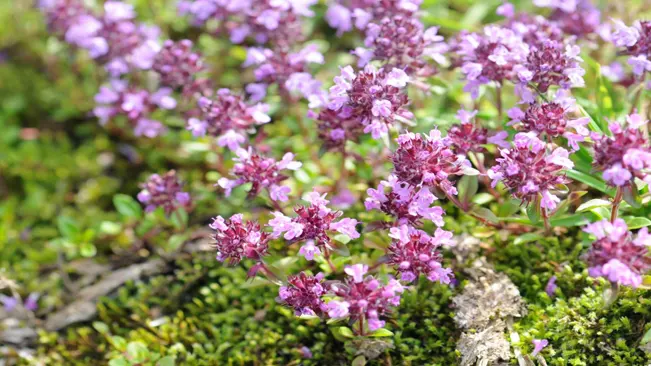
| Benefit | Description |
|---|---|
| Ground Cover | Creeping thyme forms a dense mat, preventing weed growth and providing an attractive ground cover. |
| Drought Resistance | Once established, it’s very tolerant to drought, requiring minimal watering. |
| Low Maintenance | Requires little care beyond occasional watering and trimming. |
| Aromatic Foliage | The leaves release a pleasant fragrance when stepped on or brushed against. |
| Attracts Beneficial Insects | Flowers attract pollinators like bees and butterflies, beneficial for gardens. |
| Culinary Use | Leaves can be used in cooking, offering a subtle, earthy flavor similar to mint. |
| Tolerant to Foot Traffic | Can withstand light foot traffic, making it ideal for use in pathways or between pavers. |
| Erosion Control | Its root system helps stabilize soil, preventing erosion in sloped gardens. |
| Variety of Colors and Flowers | Blooms in a range of colors, including pink, purple, and white, enhancing garden aesthetics. |
| Medicinal Properties | Traditionally used in herbal medicine for its antiseptic and expectorant properties. |
| Pet Friendly | Generally safe for pets, making it a good choice for pet owners. |
List on How To Plant Creeping Thyme
- Understanding Creeping Thyme
- Selecting the Right Location
- Soil Preparation
- Planting Creeping Thyme
- Watering and Care
- Pest and Disease Management
- Pruning and Maintenance
- Harvesting
Understanding Creeping Thyme
Creeping Thyme, scientifically known as Thymus serpyllum, is part of the Lamiaceae family, more commonly known as the mint family. This connection to the mint family is evident in its growth habit and aromatic qualities.
Characteristics of Creeping Thyme
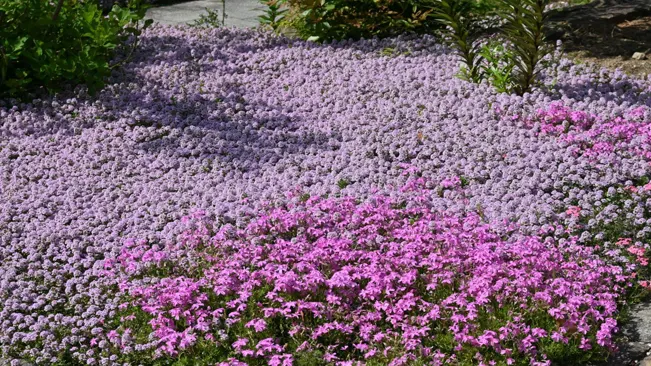
- Growth Habit: As its name suggests, Creeping Thyme is characterized by its low, spreading growth. It typically grows only a few inches in height but can spread several feet across. This sprawling nature makes it an excellent ground cover, filling in spaces and creating a continuous blanket of foliage.
- Foliage and Flowers: The leaves of Creeping Thyme are small, usually oval-shaped, and range in color from dark green to gray-green. During the summer months, it blooms profusely, displaying tiny flowers that can be pink, purple, or white. These flowers are not only visually appealing but also attract pollinators like bees.
- Sunlight Requirements: One of the key aspects of thriving Creeping Thyme is its need for full sun. This plant loves to bask in sunlight for most of the day. It’s an ideal candidate for areas in the garden that receive uninterrupted sun.
- Soil Preferences: Creeping Thyme prefers well-drained soil. It does not fare well in wet or waterlogged conditions. This preference makes it suitable for rock gardens or raised beds where drainage is enhanced. The soil doesn’t need to be highly fertile; in fact, Creeping Thyme can thrive in relatively poor soils.
- Drought Tolerance: Once established, Creeping Thyme is remarkably drought-tolerant. It can survive in dry conditions where other plants might struggle. This makes it an excellent choice for water-wise gardens or regions with water restrictions.
- Maintenance: In terms of maintenance, Creeping Thyme is quite low-key. It doesn’t require frequent watering, and its nutrient needs are minimal. Occasional trimming can help maintain its shape and encourage fuller growth.
- Use in Landscaping: Thanks to its growth habit and hardiness, Creeping Thyme is a popular choice for rock gardens, as a border plant, or in spaces between stepping stones where it can tolerate light foot traffic. Its ability to spread quickly makes it a great choice for covering large areas or slopes.
- Ecological Benefits: Beyond its visual appeal and hardiness, Creeping Thyme is beneficial for the ecosystem. It attracts beneficial insects, contributing to the biodiversity of the garden.
Selecting the Right Location
Sunlight
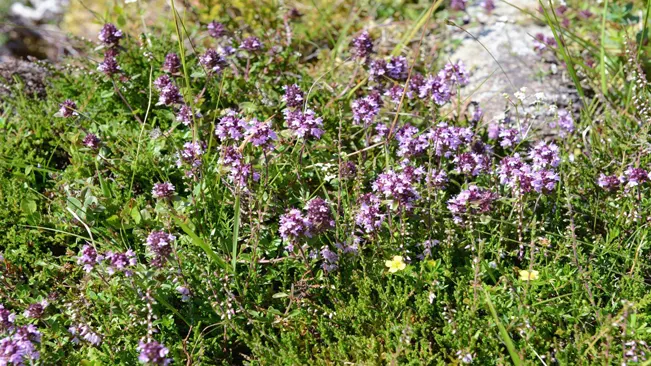
- Importance of Full Sun: Creeping Thyme performs best in full sunlight. This means the location should be exposed to direct sunlight for at least six hours per day. Full sun exposure is key to the health and vigor of the plant. It helps in promoting better flowering, healthier growth, and the development of stronger, more aromatic foliage.
- Choosing the Location: Ideal spots could be open areas in your garden, near pathways, or in rock gardens where there is minimal shade from trees or structures. South-facing locations often provide the best sun exposure.
Soil Quality
- Well-Drained Soil: The health of Creeping Thyme greatly depends on the quality of the soil, particularly its drainage capability. Well-drained soil ensures that water does not accumulate around the roots, which can lead to root rot or fungal diseases.
- Avoiding Waterlogged Areas: It’s important to avoid planting in areas where water tends to collect, such as low spots in the garden or areas with heavy, clay-rich soil that retains water.
- Improving Soil Drainage: If your soil is not naturally well-drained, consider amending it with organic material such as compost or sand. This can improve its texture and drainage capabilities. Raised beds or planting on a slight slope can also help facilitate better drainage.
- Checking Soil Conditions: Before planting, it’s a good practice to check the soil conditions by observing how quickly water drains after a heavy rain or when you water the area. If the water lingers for a long time on the surface, the spot may not be suitable for Creeping Thyme without some modification to improve drainage.
Soil Preparation
Testing and Amending Soil
- Soil pH Testing: Creeping thyme grows best in a slightly acidic to neutral soil pH, ideally between 6.0 and 7.0. To ensure your soil is within this range, you can use a soil pH testing kit, which is available at most garden centers. These kits are straightforward to use and provide a quick readout of your soil’s pH level.
- Amending Soil: If your soil is too acidic or too alkaline, you’ll need to amend it to bring it within the optimal range for creeping thyme. For soil that’s too acidic (pH below 6.0), incorporating lime can help raise the pH. If your soil is too alkaline (pH above 7.0), adding sulfur can lower the pH. In both cases, follow the instructions on the product for correct application rates.
- Improving Soil Quality: Creeping thyme prefers well-drained soil. If your soil is heavy and clayey, amending it with organic matter like compost can significantly improve its drainage and fertility. Compost adds essential nutrients to the soil and improves its structure, which enhances root growth and overall plant health.
Tilling the Soil
- Depth of Tilling: It’s advisable to loosen the soil to a depth of about 12-15 inches. This depth is ideal because it allows roots to penetrate deeply and spread out, which helps the plants establish a strong foundation and access nutrients and moisture more effectively.
- How to Till: You can use a garden fork or a rototiller for this process. Start by removing any existing weeds or grass from the area. Then, gently but thoroughly turn over the soil to the desired depth. While tilling, you can mix in the compost or any other soil amendments you’re using. This helps to evenly distribute the organic matter throughout the soil.
- Avoid Over-tilling: While tilling is beneficial, over-tilling can disrupt the soil structure and harm its natural composition. It’s enough to till the soil to the point where it’s loose and workable, without excessively breaking it down.
Planting Creeping Thyme
When to Plant
- The timing for planting creeping thyme is crucial for its successful establishment and growth. Spring and early fall are ideal because the cooler temperatures during these seasons are less stressful for the new plants. In spring, aim to plant after the last frost date in your area to avoid frost damage. In early fall, plant early enough to allow the thyme to establish before the onset of cold winter weather.
Spacing
- Correct spacing is key to the healthy growth of creeping thyme. When you plant the thyme 8-12 inches apart, each plant has enough room to grow and spread without overcrowding. This spacing helps to promote good air circulation around each plant, reducing the risk of fungal diseases which can occur in damp, poorly ventilated conditions. As creeping thyme grows, it will spread to fill in the spaces, creating a dense, continuous mat of foliage.
Planting Technique
- Preparing the Hole: Dig a hole that is slightly larger than the size of the root ball of your creeping thyme plant. This extra space allows roots to spread out easily and take hold in their new environment.
- Positioning the Plant: Remove the plant from its pot and gently loosen the root ball to encourage outward growth. Place the plant in the hole, ensuring it sits at the same depth it was in the container. This depth is important because planting too deep can cause the stem to rot, while planting too shallow can expose roots to air and sunlight, causing them harm.
- Backfilling the Hole: Fill the hole with soil, gently firming it around the roots and base of the plant. Be careful not to compact the soil too much, as this can impede water and air movement.
- Watering: After planting, water the thyme thoroughly. This helps settle the soil around the roots and eliminates air pockets. Continue to water the plants regularly until they are well-established, then reduce watering as creeping thyme is drought-tolerant.
Watering and Care
Watering
Initial Watering
- When you first plant creeping thyme, it’s crucial to water it adequately. This helps the plant establish its roots in the new location.
- For the first few weeks, keep the soil consistently moist but not waterlogged. Overwatering can cause root rot, while under-watering might prevent the plant from establishing properly.
- Depending on your climate and soil type, this might mean watering every day or every other day.
Post-Establishment Watering
- Once established, creeping thyme shows excellent drought tolerance. This means you can reduce the frequency of watering.
- Allow the soil to dry out somewhat between watering. This encourages the roots to grow deeper, further enhancing the plant’s drought resistance.
- In cooler or rainy climates, natural rainfall might be sufficient, and additional watering could be minimal or even unnecessary.
Mulching
- Applying a thin layer of mulch around the creeping thyme can be beneficial, especially in the establishment phase.
- Mulch helps to retain soil moisture, keeping the roots cool and moist. This is particularly helpful during hot, dry periods.
- Mulch also helps in weed control. Since creeping thyme is a low-growing plant, it can be out-competed by more aggressive weeds. Mulch suppresses these weeds.
- Be careful not to over-mulch, especially near the crown of the plant, as this can encourage rot.
Fertilizing
- Creeping thyme generally does not require much fertilization, especially if it’s planted in soil that’s been amended with compost.
- Over-fertilizing can actually be detrimental. It can lead to excessive foliage growth at the expense of flowering, and can even harm the plant.
- If you feel the need to fertilize, do so sparingly. Use a light, slow-release fertilizer in the spring. This gives the plant a gentle boost without overwhelming it.
- Organic options like compost tea or a diluted solution of fish emulsion can provide gentle nutrition without the risk of burning the plant.
Pest and Disease Management
Creeping thyme (Thymus serpyllum) is known for its hardiness and resistance to many common pests and diseases that affect other garden plants. However, like all plants, it isn’t entirely immune and can be susceptible to certain issues, particularly when not grown in ideal conditions. Here’s an overview of its pest and disease management:
- Root Rot: One of the most common problems for creeping thyme is root rot, often caused by excessive moisture. This plant thrives in well-drained soil and can suffer in waterlogged conditions. To prevent root rot:
- Ensure good drainage in the planting area.
- Avoid over-watering, especially in cooler months.
- Plant in raised beds or slopes if drainage is a concern in your garden.
- Fungal Diseases: Creeping thyme can occasionally suffer from fungal issues like powdery mildew, especially in humid conditions or when there’s poor air circulation around the plants. Managing fungal diseases involves:
- Planting thyme in areas with good air circulation.
- Watering at the base of the plant, rather than overhead watering, to keep the foliage dry.
- Applying fungicide sprays as a preventive measure in areas prone to such diseases.
- Pests: While creeping thyme is not a major attractor of pests, it can occasionally be bothered by aphids or spider mites, especially in stressed conditions (either due to too much water, too little water, or poor soil nutrition). To manage pests:
- Monitor plants regularly for signs of pests.
- Use a strong jet of water to dislodge aphids or mites.
- Employ natural predators like ladybugs, or use insecticidal soaps as a gentle treatment option.
- General Care to Prevent Stress: Plants that are stressed are more susceptible to disease and pest problems. Ensure that your creeping thyme is well taken care of by:
- Providing enough sunlight (full sun is ideal).
- Maintaining soil health with occasional organic matter additions.
- Avoiding overcrowding to ensure good air flow.
- Weed Control: While creeping thyme is a good ground cover that helps suppress weeds, keeping the area around young plants weed-free is important to reduce competition for nutrients and water.
Pruning and Maintenance
Pruning Creeping Thyme
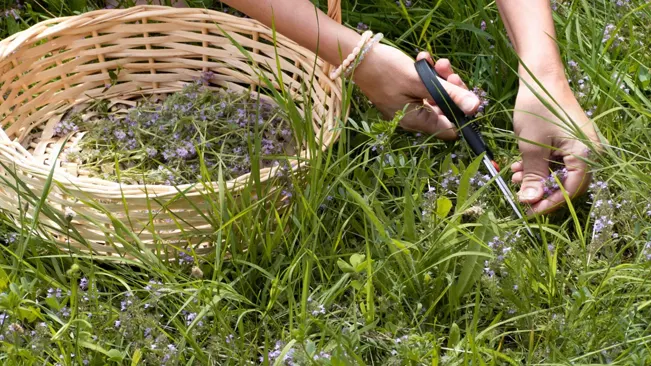
- Best Time to Prune: The ideal time to prune Creeping Thyme is just after it has finished flowering. This typically happens in late spring or early summer, depending on your climate.
- Technique: Use sharp gardening shears to trim the plant. The goal is to cut back the spent flower stems and any overgrown or leggy areas. This trimming encourages the plant to become bushier and denser, which enhances its ground-covering ability.
- Amount to Prune: It’s generally safe to cut back about one-third of the plant’s length. Avoid cutting into the woody parts of the stems, as this can harm the plant.
- Regular Maintenance: Regularly removing dead or yellowing leaves helps to keep the plant healthy and encourages new growth.
Winter Care for Creeping Thyme
- Mulching: In regions with cold winters, applying a light layer of mulch can provide extra protection to the roots. Use organic mulch like straw or shredded bark. This mulch layer helps regulate soil temperature and retains some moisture without causing waterlogging.
- Watering Before Frost: Ensure the soil is not completely dry before the first frost. Watering the plant can provide it with the necessary hydration to withstand cold temperatures.
- Avoiding Snow Damage: If possible, gently brush off heavy snow from the plants to prevent damage to the stems and foliage.
- Spring Cleanup: As the weather warms in the spring, remove any mulch to allow new shoots to emerge easily. Also, trim away any dead or damaged parts from winter.
Harvesting
Creeping thyme leaves can be harvested at any time for culinary use. The best flavor comes from leaves harvested just before the plant flowers.
Best Time for Harvesting
- While you can pick the leaves of creeping thyme at any time, the optimal time for harvesting is just before the plant flowers. This is when the leaves are most aromatic and flavorful. Creeping thyme typically flowers in late spring or early summer, so keep an eye on your plants to time your harvest right.
How to Harvest
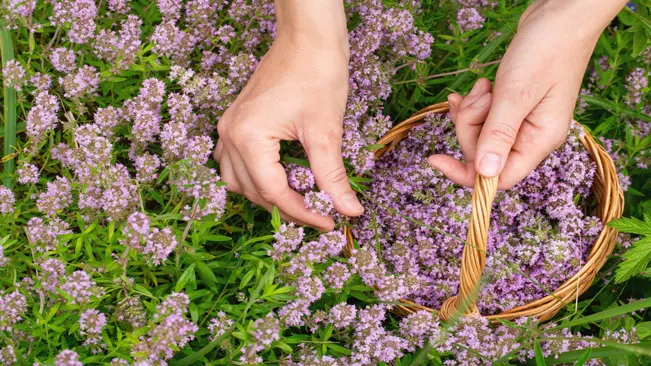
- To harvest creeping thyme, gently snip or pinch off the sprigs or leaves that you need. You can use scissors or your fingers for this task. It’s best to harvest in the morning after the dew has dried but before the sun is at its hottest, as this is when the essential oils of the plant are most concentrated.
Quantity to Harvest

- Be mindful not to over-harvest. A good rule of thumb is to take no more than one-third of the plant at a time. This approach ensures that your creeping thyme remains healthy and continues to grow.
Post-Harvest Care
- After harvesting, if the plant looks sparse, give it a bit of extra water and care to help it rejuvenate. Creeping thyme is resilient and should bounce back quickly.
Usage
- Freshly harvested creeping thyme can be used immediately in cooking. It’s excellent in dishes like soups, stews, and sauces, and pairs well with meats, vegetables, and eggs. You can also dry the leaves for later use. To dry, tie the cuttings in small bunches and hang them in a warm, airy place away from direct sunlight. Once dried, store the leaves in an airtight container.
Preservation
- Apart from drying, you can also freeze the leaves. Freezing helps to retain more flavor compared to drying. Simply chop the thyme leaves and place them in an ice cube tray, cover with water, and freeze. Use these thyme-infused ice cubes directly in your cooking.
Conclusion
Planting creeping thyme is an excellent choice for gardeners looking for a low-maintenance, fragrant, and visually appealing ground cover. By following these steps, you can successfully cultivate this versatile herb in your garden, enhancing both its beauty and functionality.
FAQs (Frequently Asked Questions)
- What is the best time to plant creeping thyme?
The ideal time to plant creeping thyme is in the spring or early fall. These seasons offer cooler temperatures that are conducive to root development. - How much sunlight does creeping thyme need?
Creeping thyme thrives in full sun and requires at least six hours of direct sunlight daily to grow well. - What type of soil is best for creeping thyme?
Well-drained soil is ideal for creeping thyme. It prefers a slightly acidic to neutral pH. Amending the soil with organic matter can help improve its quality. - How far apart should I plant creeping thyme?
Space creeping thyme plants about 8 to 12 inches apart. This spacing allows adequate room for growth and air circulation. - How do I prepare the ground for planting?
Till the soil to a depth of 12-15 inches and remove any weeds or debris. You may also want to add compost or a light fertilizer to enrich the soil. - How much water does creeping thyme need?
Water the plants well after planting to help establish roots. Once established, creeping thyme is drought-tolerant and requires minimal watering. - Does creeping thyme require fertilizer?
Generally, creeping thyme doesn’t require much fertilizer. If needed, use a light, slow-release fertilizer in early spring. - How do I control pests and diseases in creeping thyme?
Creeping thyme is relatively disease and pest-resistant. However, ensure good air circulation and avoid overwatering to prevent fungal diseases. - When and how should I prune creeping thyme?
Prune or trim creeping thyme after it blooms to maintain its shape and encourage a denser mat. This is usually done in late summer or early fall. - Can creeping thyme withstand foot traffic?
Creeping thyme is fairly tolerant of light foot traffic, making it a good choice for pathways or between stepping stones in a garden.

Kristine Moore
Forestry AuthorI'm Kristine Moore, a seasoned garden landscaping professional with over 30 years of experience. My extensive career has been dedicated to transforming outdoor spaces into stunning, sustainable landscapes. With a deep understanding of horticulture, design principles, and environmental stewardship, I have become a respected figure in the field, known for creating harmonious, visually appealing, and eco-friendly gardens. My commitment to excellence and continuous learning in landscaping trends and techniques has solidified my reputation as an expert in garden design and implementation.



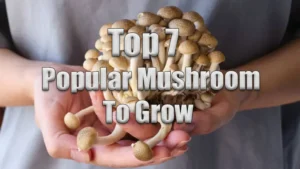









Leave your comment